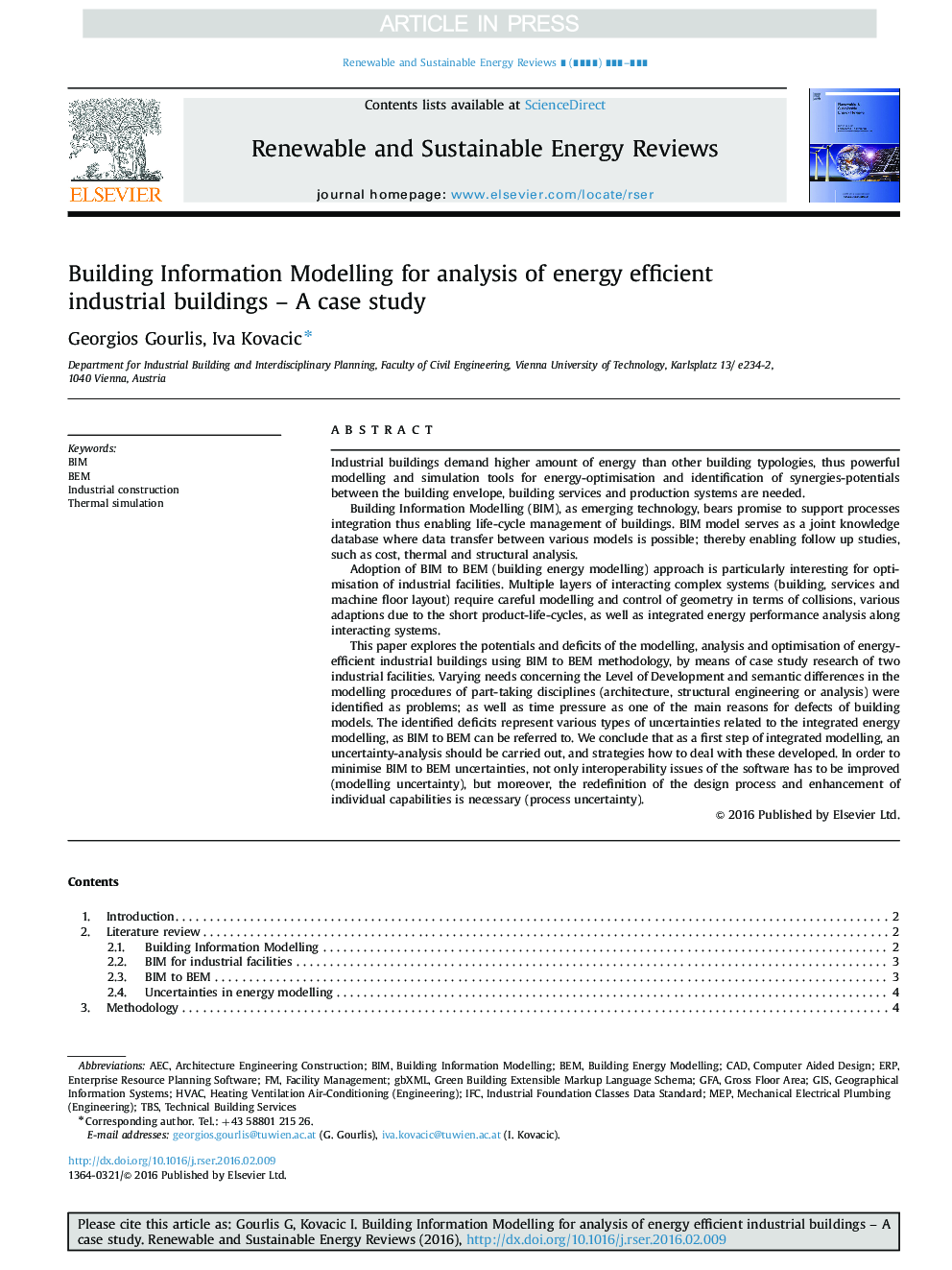| Article ID | Journal | Published Year | Pages | File Type |
|---|---|---|---|---|
| 5483421 | Renewable and Sustainable Energy Reviews | 2017 | 11 Pages |
Abstract
This paper explores the potentials and deficits of the modelling, analysis and optimisation of energy-efficient industrial buildings using BIM to BEM methodology, by means of case study research of two industrial facilities. Varying needs concerning the Level of Development and semantic differences in the modelling procedures of part-taking disciplines (architecture, structural engineering or analysis) were identified as problems; as well as time pressure as one of the main reasons for defects of building models. The identified deficits represent various types of uncertainties related to the integrated energy modelling, as BIM to BEM can be referred to. We conclude that as a first step of integrated modelling, an uncertainty-analysis should be carried out, and strategies how to deal with these developed. In order to minimise BIM to BEM uncertainties, not only interoperability issues of the software has to be improved (modelling uncertainty), but moreover, the redefinition of the design process and enhancement of individual capabilities is necessary (process uncertainty).
Keywords
Related Topics
Physical Sciences and Engineering
Energy
Renewable Energy, Sustainability and the Environment
Authors
Georgios Gourlis, Iva Kovacic,
